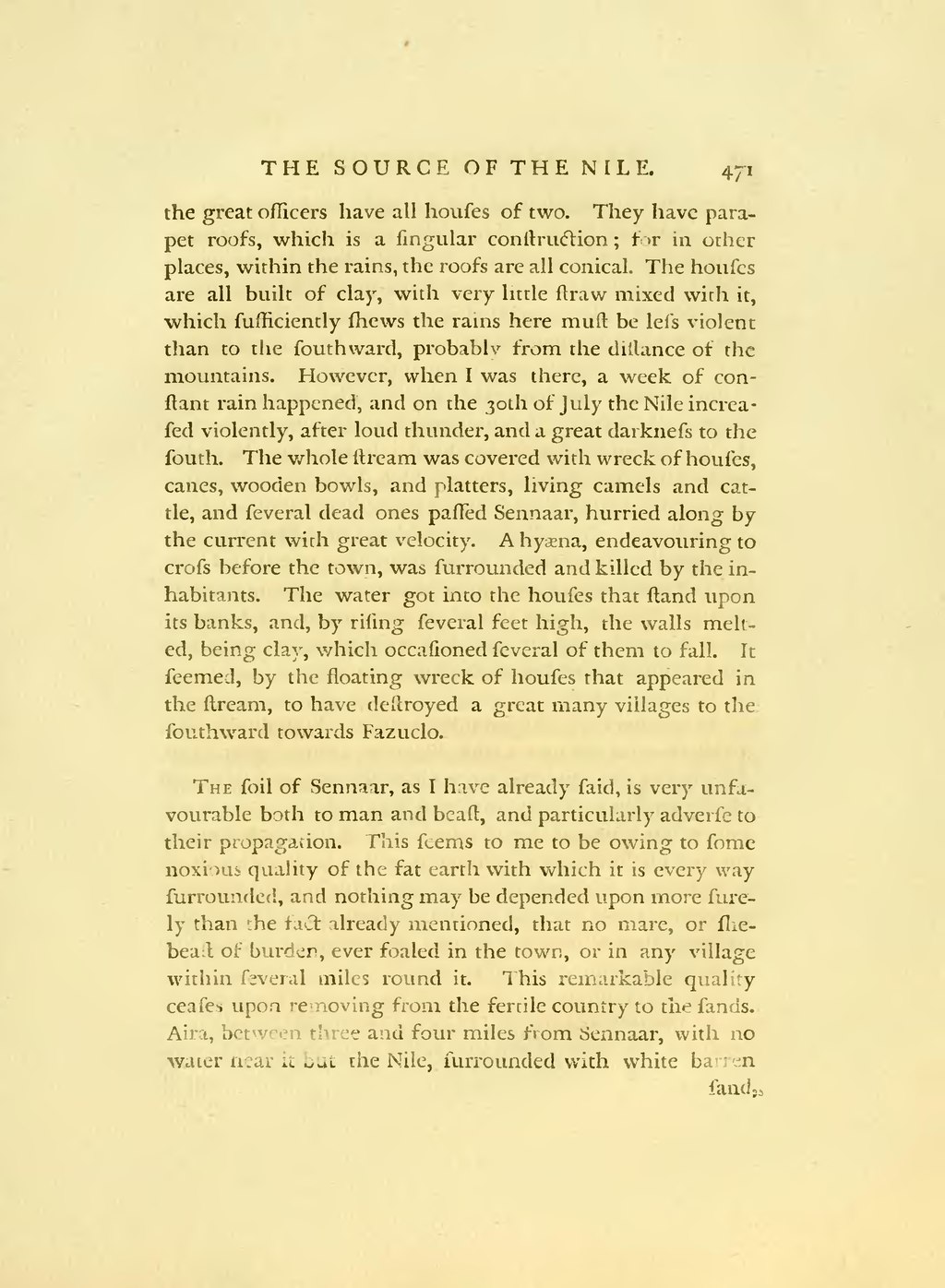the great officers have all houses of two. They have parapet roofs, which is a singular construction; for in other places, within the rains, the roofs are all conical. The houses are all built of clay, with very little straw mixed with it, which sufficiently shews the rains here must be less violent than to the southward, probably from the dalliance of the mountains. However, when I was there, a week of constant rain happened, and on the 30th of July the Nile increased violently, after loud thunder, and a great darkness to the south. The whole stream was covered with wreck of houses, canes, wooden bowls, and platters, living camels and cattle, and several dead ones passed Sennaar, hurried along by the current with great velocity. A hyaena, endeavouring to cross before the town, was surrounded and killed by the inhabitants. The water got into the houses that stand upon its banks, and, by rising several feet high, the walls melted, being clay, which occasioned several of them to fall. It seemed, by the floating wreck of houses that appeared in the stream, to have destroyed a great many villages to the southward towards Fazuclo.
The soil of Sennaar, as I have already said, is very unfavourable both to man and beast, and particularly adverse to their propagation. This seems to me to be owing to some noxious quality of the fat earth with which it is every way surrounded, and nothing may be depended upon more surely than the fact already mentioned, that no mare, or she-beast of burden, ever foaled in the town, or in any village within several miles round it. This remarkable quality ceases upon removing from the fertile country to the sands. Airs, between three and four miles from Sennaar, with no water near it but the Nile, surrounded with white barren
